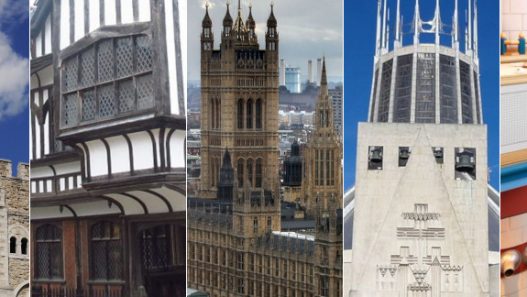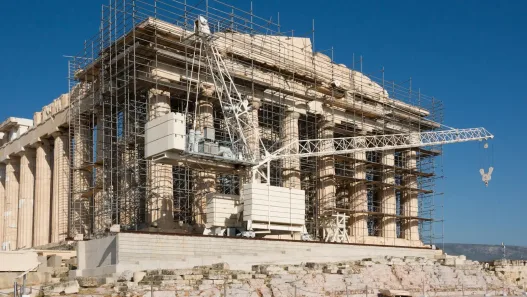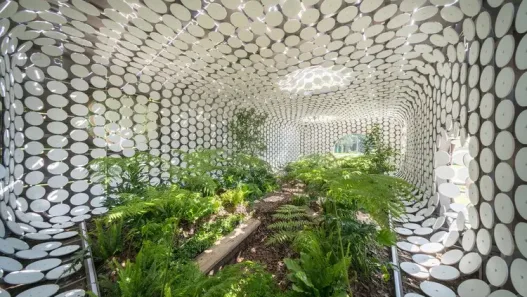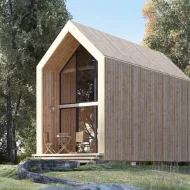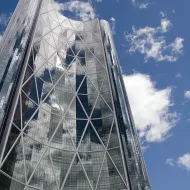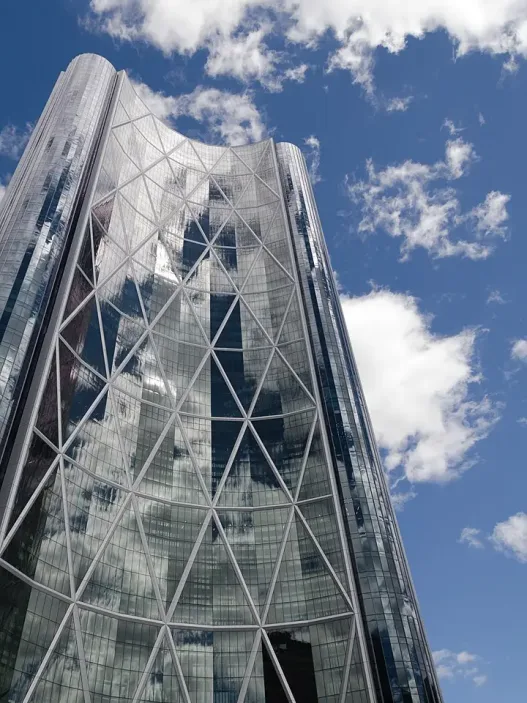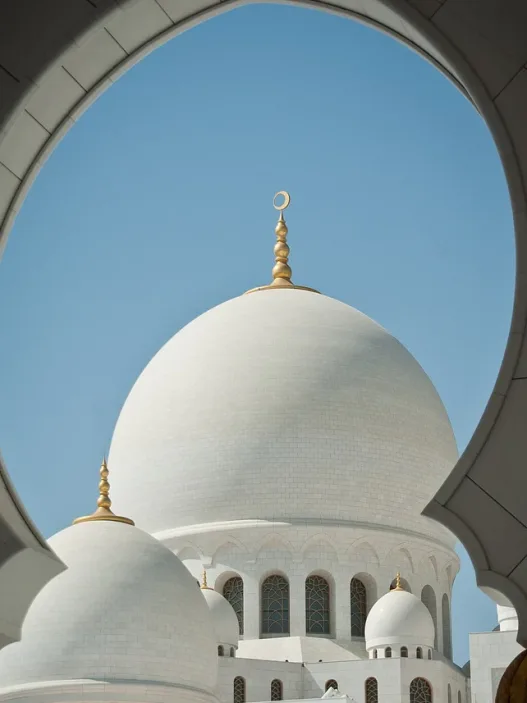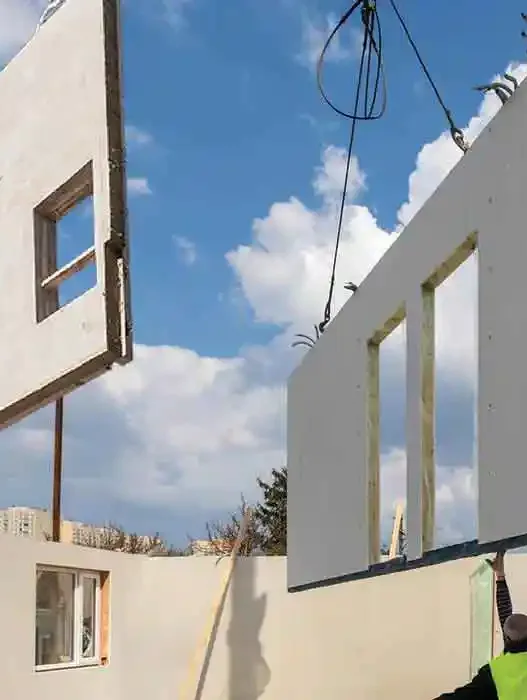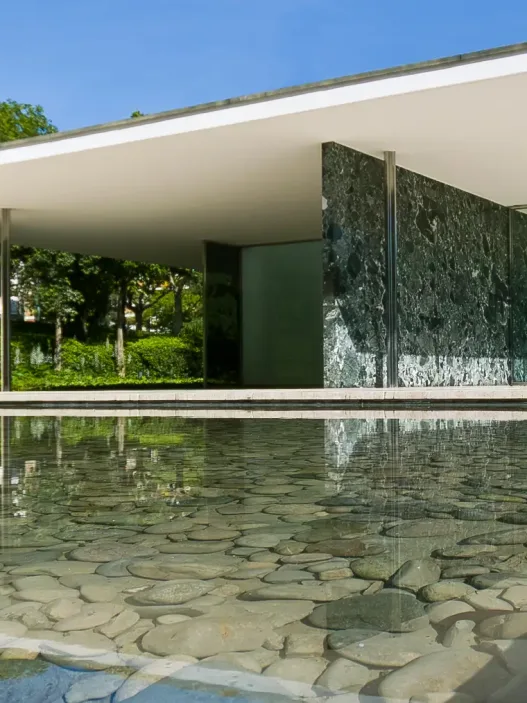Cor-Ten steel, also known as weathering steel, is a unique material that has fascinated architects and designers for decades. Its distinctive rust-like appearance and exceptional durability make it a popular choice for a wide range of applications. As urban environments continue to evolve, the use of Cor-Ten steel offers not only functional benefits but also aesthetic appeal, allowing structures to blend seamlessly into their surroundings.
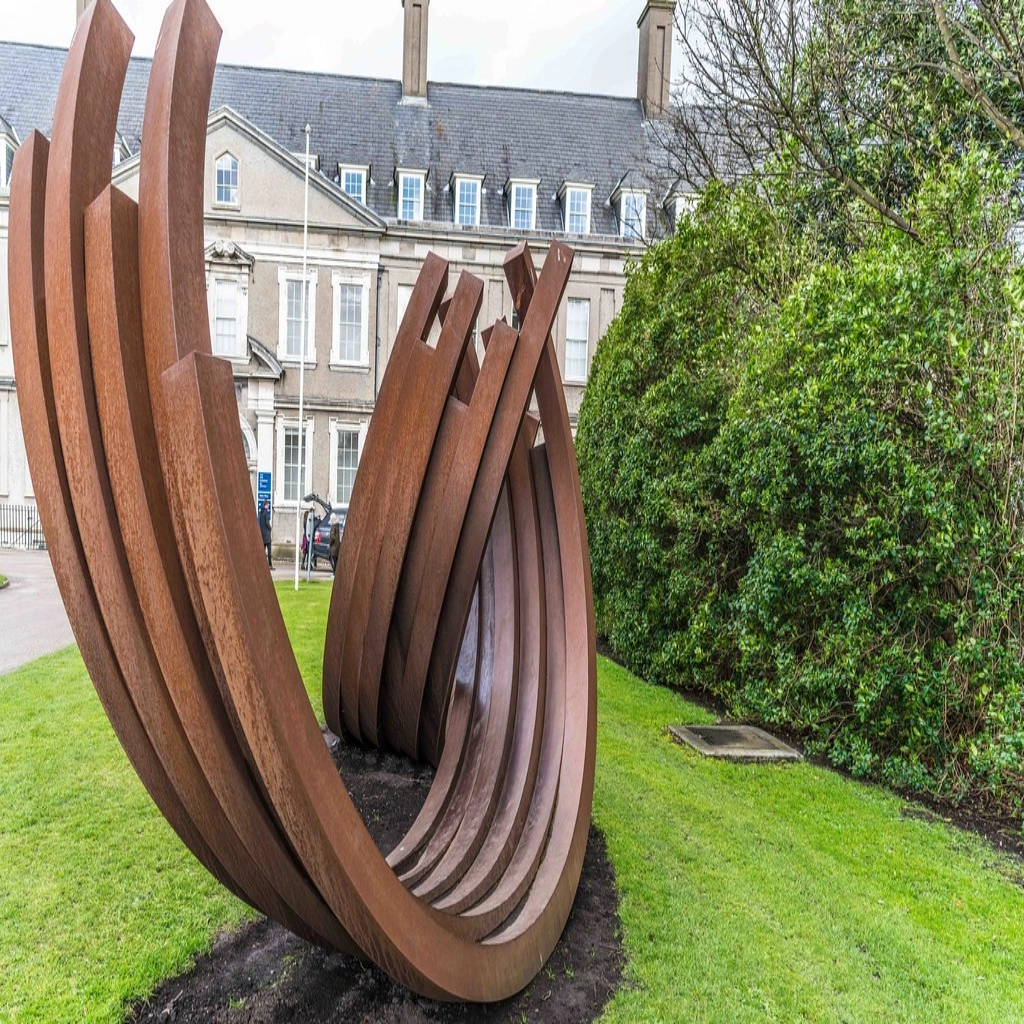
What is Cor-Ten Steel?
Cor-Ten steel is a type of alloy steel that develops a stable rust-like appearance when exposed to the weather. This process, known as weathering, allows the material to form a protective layer of oxidized steel that prevents further corrosion. Unlike traditional steel, which often requires regular painting and maintenance to resist rusting, Cor-Ten steel is designed to withstand the elements with minimal maintenance. It gets its name from its two key properties: corrosion resistance and tensile strength.
Steel is typically composed of iron, copper, nickel and chromium, which increases its durability and resistance to atmospheric elements. The unique composition of Cor-Ten steel enables it to withstand harsh weather conditions, making it ideal for outdoor use. Over time, as it ages, it takes on a warm, earthy color that can beautifully complement the natural environment.
Historical Development
The development of Cor-Ten steel dates back to the 1930s when it was first produced by the United States Steel Corporation. It was originally intended for use in railroad structures and bridges due to its high strength and resistance to corrosion. As the material gained popularity, architects and designers began to realize its potential in aesthetic applications.
By the 1960s, Cor-Ten steel had entered the world of architecture with notable examples such as the famous “Vitra Fire Station” designed by Zaha Hadid. This shift marked a turning point as designers sought to incorporate the material’s unique appearance into artistic expressions. Over the years Cor-Ten steel has become a symbol of modern architecture and is often seen in public sculptures, residential and commercial structures.
Properties and Benefits
One of the outstanding features of Cor-Ten steel is its exceptional weather resistance. When exposed to the elements, it develops a protective patina that not only enhances its visual appeal but also significantly reduces the need for maintenance. This patina acts as a barrier, preventing moisture from penetrating the steel and causing corrosion.
Another important feature of Cor-Ten steel is its strength. It has a high tensile strength, which means it can withstand heavy loads and stresses without deforming. This makes it an excellent choice for structural applications where reliability and safety are paramount. Furthermore, the material’s unique aesthetic qualities, ranging from dark browns to vibrant oranges, allow architects to create visually striking designs in harmony with their surroundings.
Furthermore, Cor-Ten steel is often seen as a sustainable choice. Its longevity and durability means it can last for decades, reducing the need for replacement. When used in construction, it can also minimize the environmental impact associated with frequent maintenance and repainting of traditional steel structures.
Comparison with Traditional Steel
When Cor-Ten steel is compared to conventional steel, several key differences emerge. Conventional steel is typically coated with paint or a protective layer to prevent rusting. This coating requires regular maintenance as it can chip or wear off over time, exposing the underlying steel to potential corrosion. In contrast, the aging process of Cor-Ten steel creates a self-protective layer that eliminates the need for such maintenance.
Aesthetically, traditional steel often presents a uniform, metallic surface that does not blend in with the natural environment. However, Cor-Ten steel evolves over time, developing a rich patina that can enhance the beauty of a structure and its surroundings. This evolving color palette can complement landscapes, making it a preferred option for both urban and rural settings.
Furthermore, while traditional steel is versatile and widely used, Cor-Ten steel offers a unique character that can add depth to architectural designs. It can evoke feelings of warmth and connection to nature, which are especially valuable in today’s design approach that emphasizes sustainability and harmony with the environment.
Common Applications
Cor-Ten steel has found its way into numerous applications that showcase its versatility and aesthetic appeal. One of the most obvious uses is in architectural facades. Buildings such as the “DeYoung Museum” in San Francisco use Cor-Ten steel to create striking exteriors that reflect the surrounding landscape while standing out as modern masterpieces.
In landscape architecture, Cor-Ten steel is often used for features such as planters, benches and fencing. Its robust construction is ideal for outdoor environments where it can withstand the elements without compromising its visual appeal. Parks and public spaces often incorporate Cor-Ten steel elements, creating a sense of unity with nature.
Sculptors and artists have also embraced Cor-Ten steel for its unique textures and colors. Iconic public art installations such as Richard Serra’s towering steel sculptures show how this material can transform urban spaces and provoke thought. These works engage viewers not only as focal points, but also by their presence and character.
In sum, Cor-Ten steel is much more than a construction material; it is a bridge between architecture and nature, combining functionality with beauty. As cities grow and develop, the continued use of this extraordinary material will undoubtedly shape the landscape of modern design, creating spaces that are not only functional but also aesthetically enriching.
Architectural Masterpieces Using Cor-Ten Steel
Known for its distinctive rust-like appearance, Cor-Ten steel has become a popular choice among architects and designers, changing the way we think about building materials. First developed in the 1930s for its weather-resistant properties, Cor-Ten steel develops a stable, protective layer of rust that eliminates the need for painting and reduces maintenance costs. This unique property not only increases the durability of structures, but also adds an aesthetic quality that resonates with the natural environment. As architects strive to create buildings in harmony with their surroundings, Cor-Ten steel stands out as a material that embodies both strength and beauty.
The appeal of Cor-Ten steel lies not only in its functionality, but also in its ability to evoke emotion and storytelling through its weathered texture. As the material ages, it tells a story of resilience, reflecting the passage of time and elements. This quality has made it a preferred choice in modern architecture where the relationship between a building and its landscape is very important.
Famous Buildings Using Kor-Ten Steel
Many iconic buildings around the world showcase the versatility and beauty of Cor-Ten steel. The **Seattle Central Library**, designed by Rem Koolhaas, is a prime example. The innovative use of materials, including Cor-Ten, creates a striking contrast between the robust exterior and the sleek interior, inviting visitors to explore the versatile spaces. Similarly, the **Vitra Fire Station** in Germany, designed by Zaha Hadid, uses Cor-Ten steel to give a sense of dynamism and forward-thinking design. The building’s angular forms and rust-colored façade not only catch the eye, but also integrate seamlessly with the industrial context of the Vitra Campus.
These structures exemplify how architects utilize Cor-Ten steel to achieve a unique aesthetic while ensuring the longevity of their designs. The material’s ability to blend with a variety of environments, from urban centers to natural landscapes, makes it a favorite among contemporary architects looking to push the boundaries of traditional building materials.
Case Study: Corroding Steel Bridge
Located in the heart of the United States, the Weathering Steel Bridge is a stunning testament to the capabilities of Cor-Ten steel. This bridge is designed not only as a functional piece of infrastructure, but also as a work of art. The rusty surface of the steel complements the surrounding landscape, creating a striking visual harmony with the natural elements.
Engineers and architects worked closely together to ensure that the bridge is not only aesthetically pleasing but also structurally sound. Cor-Ten steel’s corrosion-resistant properties mean the bridge will require less maintenance over time, allowing it to withstand harsh weather conditions while maintaining its beauty. This project highlights how Cor-Ten steel can transform functional structures into landmarks and everyday experiences into moments of architectural appreciation.
Case Study: The High Line in New York
The High Line, an elevated park on the west side of Manhattan, is another excellent example of Cor-Ten steel at work. Originally a disused railroad, the High Line has been transformed into a public park celebrating the area’s industrial heritage. The use of Cor-Ten steel in the park’s railings, seating and structural elements adds a sense of continuity with the original railroad while providing a robust, weather-resistant material.
Visitors to the High Line experience a unique blend of nature and urban life with lush plantings set against rustic steel elements. The design by James Corner Field Operations and Diller Scofidio + Renfro emphasizes the connection between architecture, landscape and community. This project not only repurposes a forgotten site, but also demonstrates how Cor-Ten steel can create inviting public spaces that encourage social interaction and community engagement.
Case Study Vitra Fire Station
The Vitra Fire Station, designed by Zaha Hadid, is a pioneering work that showcases the dynamic potential of Cor-Ten steel. The structure’s bold, angular forms are accentuated by the material’s rust-colored finish, creating a visual dialogue with the surrounding architecture of the Vitra Campus. Hadid’s innovative design challenges traditional perceptions of what a fire station can be by blurring the lines between art and architecture.
The building serves not only as a functional space for firefighters, but also as a landmark that attracts visitors from around the world. The use of Cor-Ten steel reinforces the building’s dramatic presence while ensuring its resistance to the elements. The Vitra Fire Station stands as a testament to how materials can be used to push architectural boundaries and inspire the next generation of designers.
Impact on Contemporary Architecture
The influence of Cor-Ten steel on contemporary architecture cannot be overstated. Its unique aesthetic and functional properties have inspired architects to explore new design possibilities and push the boundaries of traditional materials. As sustainability becomes increasingly important in architectural practice, Cor-Ten steel’s longevity and lower maintenance needs align perfectly with eco-friendly design goals.
Moreover, the material’s ability to resonate with its surroundings encourages architects to create buildings that are integral parts of their environment, not just structures. This philosophy encourages a deeper understanding of the relationship between architecture and nature, inviting a more harmonious coexistence.
In summary, Cor-Ten steel has become a defining material in modern architecture, offering a blend of beauty, durability and sustainability. As architects continue to explore its potential, we can expect to see even more innovative uses of this remarkable material in the coming years.
Design Reviews
When it comes to architecture, design considerations are crucial. They shape not only the appearance of a building, but also its functionality, sustainability and how it blends into its surroundings. When researching materials and methods, Cor-Ten steel emerges as a fascinating choice with unique qualities that influence various aspects of design. Let us now examine a few key points that highlight the importance of Cor-Ten steel in modern architecture.
Aesthetic Qualities of Cor-Ten Steel
Often known for its distinctive rust-like appearance, Cor-Ten steel provides a unique aesthetic that can transform architectural projects. This material develops a protective layer of rust when exposed to the weather, which not only enhances its visual appeal, but also protects the underlying steel from further corrosion. Its warm, earthy tones harmonize with natural landscapes, making it an excellent choice for structures that aim to create a harmonious relationship with their surroundings.
Architects often use Cor-Ten steel to create striking contrasts with glass and concrete, offering a blend of modernity and tradition. Its sculptural quality allows for dynamic forms and textures that push the boundaries of traditional design. From bridges to art installations, the use of Cor-Ten steel can evoke emotions and provoke thoughts, inviting observers to reflect on the interaction of nature and man-made environments.
Integration with Surrounding Environments
Integrating a building with its surroundings is a critical aspect of architectural design. Cor-Ten steel excels in this area thanks to its ability to blend seamlessly with natural elements. The steel’s shifting patina interacts with the changing light and seasons, allowing it to resonate with its background, whether it be an urban landscape or a rural setting.
For example, the famous High Line park in New York City seamlessly merges with the greenery and urban fabric, showcasing Cor-Ten steel in railings and benches. This careful integration not only enhances the aesthetic experience, but also encourages a dialog between the architecture and its context. As buildings made of Cor-Ten steel age, they often become more beautiful and deepen their connection to the environment over time.
Durability and Maintenance Challenges
Although Cor-Ten steel is known for its durability, it is not without its challenges in terms of durability and maintenance. The initial rusting process is crucial for the formation of the protective layer, but this stage can lead to staining of surrounding materials during rainfall. Architects should consider these factors when designing structures, especially in areas of heavy rainfall.
Despite these challenges, Cor-Ten steel is generally low maintenance, as the protective layer significantly reduces the need for repainting or extensive maintenance. However, regular inspections are necessary to ensure that the integrity of the material remains intact. This balance between durability and aesthetic appeal makes Cor-Ten steel an attractive choice, but requires careful planning and foresight on the part of architects.
Environmental Impact and Sustainability
In today’s world, sustainability is more than a buzzword; it is a fundamental principle that guides architectural practice. Cor-Ten steel offers several environmental advantages. Its long life reduces the frequency of material replacement, which minimizes waste. It is also often derived from recycled materials and is compatible with sustainable building practices.
Architects are increasingly considering the life cycle of materials in their designs and Cor-Ten steel fits well within this framework. Projects using this steel can demonstrate a building’s commitment to sustainability by demonstrating its ability to coexist with nature while reducing its ecological footprint. This thoughtful approach not only benefits the environment, but also enhances the building’s reputation among environmentally conscious clients.
Variability of Color and Texture
One of the most fascinating properties of Cor-Ten steel is its variability in color and texture. As it ages, the surface undergoes a transformation, transforming into a spectrum of hues ranging from deep oranges to rich browns. This natural evolution creates a living canvas that changes with the environment and time, making each building a unique work of art.
Architects often embrace this variability and use it to evoke certain moods or themes in their designs. The textured surface can also enhance the tactile experience for those interacting with the building, inviting touch and interaction. For example, in museums or public spaces, the dynamic quality of Cor-Ten steel can inspire curiosity and encourage visitors to explore further, deepening their connection to the space.
In conclusion, the design considerations surrounding Cor-Ten steel reveal its versatile nature as a building material. From its aesthetic appeal to its environmental sustainability, Cor-Ten steel offers architects a rich palette to work with, encouraging creativity and innovation in architectural design. As we continue to explore and utilize this extraordinary material, it promises to play an important role in shaping the built environment of the future.
Cor-Ten Steel in Sculpture
Cor-Ten steel, also known as weathering steel, is an extraordinary material that has captured the imagination of sculptors and artists around the world. Originally developed for its structural strength and resistance to atmospheric corrosion, this alloy has become a preferred choice for sculpture due to its unique aesthetic qualities. When exposed to the elements, its surface develops a rich, rust-like patina, which not only enhances its visual appeal, but also protects the underlying metal from further deterioration. This transformative weathering process adds a dynamic quality to the art, allowing the sculptures to evolve over time.
Artists are attracted to Cor-Ten steel not only for its durability, but also for its ability to convey deeper meaning through its appearance. The evolving nature of the material reflects themes of change, flexibility and the passage of time, making it a powerful medium for expression. In public spaces, Cor-Ten sculptures can engage communities, provoke thought and invite interaction, bridging the gap between nature, architecture and art.
Notable Sculptors Using Cor-Ten Steel
Many leading sculptors have embraced Cor-Ten steel, using it to create compelling works that challenge and inspire. One of the most notable is Richard Serra, whose large-scale installations utilize the weight and weathered appearance of the material to create immersive environments. Serra’s works such as “Torqued Ellipses” invite viewers to navigate in and around massive steel forms, allowing them to interact with the space in a tactile way.
Another important figure is Louise Bourgeois, who uses Cor-Ten steel in her sculptures to explore themes of memory and identity. Her works often reflect personal narratives and the choice of weathered steel adds a layer of emotional resonance. The transformation of the material over time parallels the process of personal growth and change.
These artists, among others, have not only demonstrated the versatility of Cor-Ten steel, but have also pushed the boundaries of how we perceive and interact with sculpture. Their contributions have enabled a rich dialog between material and message, allowing for a multifaceted exploration of art.
Iconic Sculptures Made of Cor-Ten Steel
Among the iconic sculptures made of Cor-Ten steel, Christo and Jeanne-Claude’s monumental work “The Gates” cannot be overlooked. Installed in New York’s Central Park, this project featured thousands of fluid fabric doors suspended from Cor-Ten steel frames, creating a vibrant pathway of color and texture that transformed the landscape. The contrast between the natural environment and the industrial quality of the steel added depth to the installation, inviting viewers to reflect on the relationship between nature and human intervention.
Another important piece is Louise Bourgeois’ “Maman”, a spider sculpture that rises as a metaphor for motherhood and protection. Made of Cor-Ten steel, it not only demonstrates the strength of the material, but also evokes a sense of fragility and strength intertwined. The weathered surface adds to the emotional impact of the sculpture, representing the complexity of family ties.
These iconic sculptures demonstrate how Cor-Ten steel can transcend mere materiality and become a canvas for deep themes and narratives. They leave a lasting impression on those who encounter them, emphasizing art’s ability to provoke thought and stir emotions.
The Role of Kor-Ten in Public Art
Kor-Ten steel plays an important role in public art as it can withstand the elements while adding character to urban landscapes with its durability and unique aesthetic qualities. Public sculptures made of this material often become landmarks that invite dialog and interaction between community members. They enrich the cultural fabric of a city by serving as focal points in parks, plazas and streets.
One exemplary project is the “Chicago Picasso”, created by Pablo Picasso in 1967. Although not made entirely from Cor-Ten, its presence in the urban environment has inspired many artists to explore weathered steel in their own public works. The sculptures create a sense of place and identity, encouraging both residents and visitors to engage with the space.
Furthermore, the ability of Cor-Ten steel to develop a natural patina means that these sculptures change over time, reflecting the environment and the passing of the seasons. This evolving quality can create a deeper connection between the artwork and its environment, inviting viewers to witness the interaction of nature and art in a shared public space.
Working Techniques with Kor-Ten Steel
Working with Cor-Ten steel requires a unique set of techniques that address the unique characteristics of this steel. Artists often start with a strong design foundation, ensuring that the structure can support the weight and integrity of the material. Unlike traditional steel, Cor-Ten is more forgiving in terms of surface treatment, as the weathering process is intentional and part of the aesthetic.
Welding and fabrication are critical skills when creating sculptures in Cor-Ten steel. Artists must be adept at manipulating the metal and understanding how it behaves during the welding process. Welds must be strong enough to withstand environmental forces, yet aesthetically integrated into the overall design.
Patience is also a virtue when working with this material. Artists often allow the decomposition process to occur naturally, allowing the steel to develop its distinctive layer of rust over time. This creates a dialog between the artist’s intention and the innate properties of the material, allowing the sculpture to undergo an organic evolution.
Symbolism of Decomposition in Art
The weathering of Cor-Ten steel carries a profound symbolism that resonates deeply within the art community. As the steel develops its rust-like patina, it embodies themes of durability and transformation. This natural aging process reflects the inevitability of change, parallel to the human experience of growth, decay and renewal.
In many ways, patina can be seen as a metaphor for life itself. Just as steel evolves through exposure to the elements, people are transformed throughout their lives. This connection allows viewers to engage with the sculptures on a personal level, reflecting on their own journey and the passage of time.
Furthermore, the preference for the weathering of steel in art can challenge traditional notions of beauty. Instead of seeking perfection, artists embrace imperfection and the beauty that comes with age and experience. This perspective fosters a deeper appreciation for the natural cycles of life and the beauty found in scars, both in art and in our own stories.
In conclusion, Cor-Ten steel is not just a material, but a canvas for profound explorations in sculpture. Its unique properties, combined with the creativity of artists, allow the creation of works that resonate with audiences on multiple levels, making it an important medium in contemporary art.
Future Trends in Kor-Ten Steel Applications
Known for its distinctive rust-like appearance, Cor-Ten steel has captured the imagination of architects and designers around the world. Its unique weathering properties allow it to develop a protective layer of rust that eliminates the need for paint, making it not only visually stunning but also practical for a variety of applications. Looking to the future, trends surrounding Cor-Ten steel are evolving, influenced by innovations in materials technology, emerging architectural styles, urban planning needs, eco-friendly design considerations and global perspectives on sustainable materials.
Innovations in Material Technology
Recent advances in materials technology are changing the way Cor-Ten steel is produced and used. New alloy compositions are being developed to further extend the steel’s life in harsh environments by improving its weathering resistance and capability. Researchers are experimenting with coatings that can improve resistance to corrosion and environmental damage while maintaining the aesthetic appeal Cor-Ten is known for. In addition, the integration of smart technology is beginning to emerge, where sensors can be embedded into the material to monitor structural health and environmental conditions, leading to more flexible designs. These innovations not only improve the functionality of Cor-Ten steel, but also open new avenues for its use in modern architecture.
Evolving Architectural Styles
The architectural landscape is constantly evolving and Cor-Ten steel is finding an important place in new styles that emphasize raw, natural aesthetics. Designers are increasingly drawn to the material’s robust texture and earthy tones, which blend beautifully with organic forms and sustainable practices. The rise of biophilic design, where buildings connect with nature, has seen Cor-Ten steel used in facades, sculptures and landscape features that blend seamlessly into their surroundings. This trend is not only visually appealing, but also reflects a growing appreciation for materials that tell a story and enhance the narrative of a building’s design. Projects such as the High Line in New York show how Cor-Ten can be integrated into urban environments and create both functional and artistic spaces.
Cor-Ten Steel in Urban Planning
As cities become more densely populated, urban planners are exploring how materials like Cor-Ten steel can solve sustainability and aesthetic issues in public spaces. Its ability to withstand the elements while providing a unique visual identity makes it an ideal choice for parks, public art installations and civic buildings. Cor-Ten steel is not only sustainable, but can also contribute to the creation of engaging and inviting urban environments. For example, many cities use Cor-Ten in the construction of bridges and walkways, which not only serve practical purposes but also function as landmarks that enhance community identity. The natural patina of the material evolves over time, making each structure a dynamic part of the urban landscape.
Potential for Environmentally Friendly Designs
With the increasing emphasis on sustainable architecture, Cor-Ten steel is emerging as a preferred material for environmentally friendly designs. Its longevity and low maintenance requirements contribute to reducing the overall environmental impact of buildings. In addition, Cor-Ten steel is often sourced and manufactured in a way that minimizes its carbon footprint in line with green building certifications such as LEED. Architects creatively use Cor-Ten in combination with other sustainable materials such as reclaimed wood and green roofs to create structures that are not only beautiful but also environmentally responsible. Cor-Ten’s ability to harmonize with the natural environment supports its understanding of sustainability, making it a strong choice for forward-thinking designs.
Global Perspectives in Material Use
Across the world, the application of Cor-Ten steel reflects different cultural attitudes towards the material and design. In regions where industrial heritage is celebrated, such as Europe and the United States, Cor-Ten steel is often used to evoke a sense of nostalgia and continuity. In contrast, in emerging economies, it is seen as a symbol of modernity and innovation. Architectural projects in Asia and the Middle East are beginning to incorporate Cor-Ten steel into contemporary designs, demonstrating the material’s versatility and appeal in different contexts. These global perspectives highlight the material’s adaptability and the way it resonates with various cultural narratives, paving the way for its continued evolution in architecture.
In sum, Cor-Ten steel stands at the intersection of innovation, sustainability and aesthetic appeal. As we move forward, its applications will undoubtedly expand, driven by technological advances and a collective desire for designs that honor both our environment and our heritage. The future of Cor-Ten steel is bright and promises a blend of functionality and art that will continue to inspire both architects and communities.
Conclusion
Summary of Key Points
Throughout our research into architectural materials and their importance, we have explored the unique qualities of Cor-Ten steel. Known for its distinctive rust-like appearance, this weathering steel not only offers aesthetic appeal, but also incredible durability and resistance to atmospheric corrosion. We examined how its self-protecting oxidized layer allows structures to age gracefully and transform into stunning architectural elements over time. Whether in urban settings or natural landscapes, Cor-Ten steel has become a favorite among architects, blending seamlessly with its surroundings while withstanding the elements.
The Legacy of Cor-Ten Steel in Architecture
Since its introduction, Cor-Ten steel has gained a notable place in the architectural world. Originally developed for industrial applications, it has found its way into many iconic buildings. Famous examples include the angular, bold forms of the Weathering Steel Bridge in Chicago and the striking sculptures at the Storm King Art Center in New York. These structures not only showcase the strength of the material, but also emphasize its ability to harmonize with nature. This heritage is not just about its physical characteristics; it represents a shift in architectural philosophy, embracing materials that evolve with their surroundings, promoting sustainability and flexibility.
Final Thoughts on Aesthetic and Functional Value
The duality of Cor-Ten steel lies in its aesthetic and functional value. Visually, it brings a warm, organic quality to modern architecture, contrasting sharpness with a textured, earthy palette. Functionally, its longevity reduces the need for frequent maintenance and replacement, making it an environmentally friendly choice in the long run. The integration of Cor-Ten steel into public spaces such as parks and plazas encourages interaction and connection, inviting people to engage more deeply with their surroundings. As architects continue to innovate, the potential for Cor-Ten steel to redefine our built environment is immense.
As we conclude this exploration of Cor-Ten steel, we invite you to reflect on how materials shape our experience of architectural spaces. Have you encountered buildings using Cor-Ten steel and what were your thoughts on their design and integration into the landscape? Your views and experiences can contribute to a wider discussion about the relationship between materials and architecture. Share your stories and perspectives in the comments or via social media.



